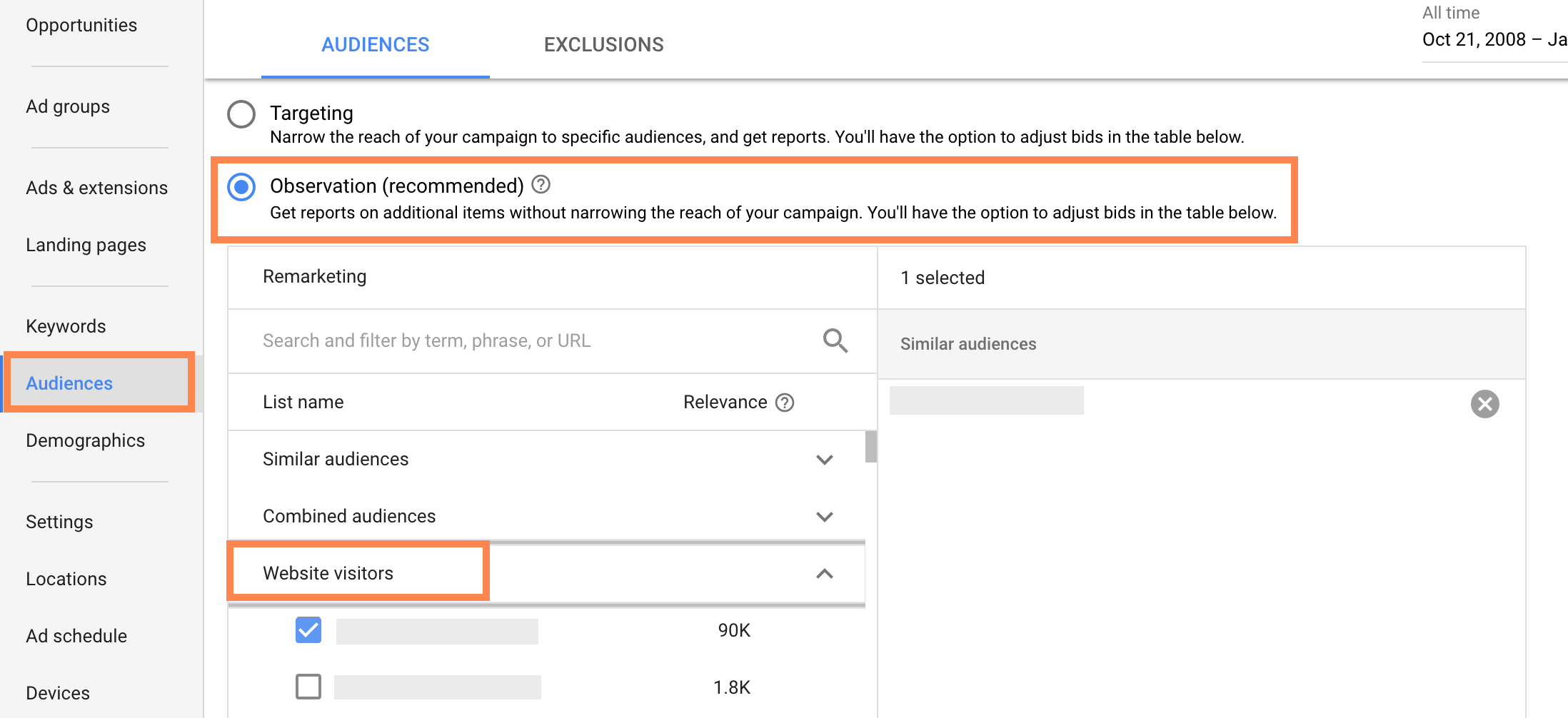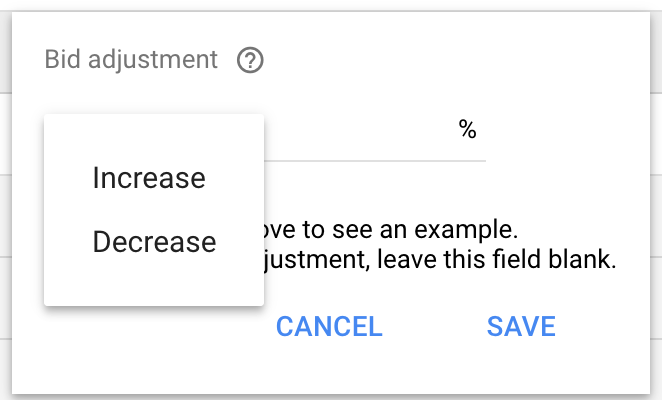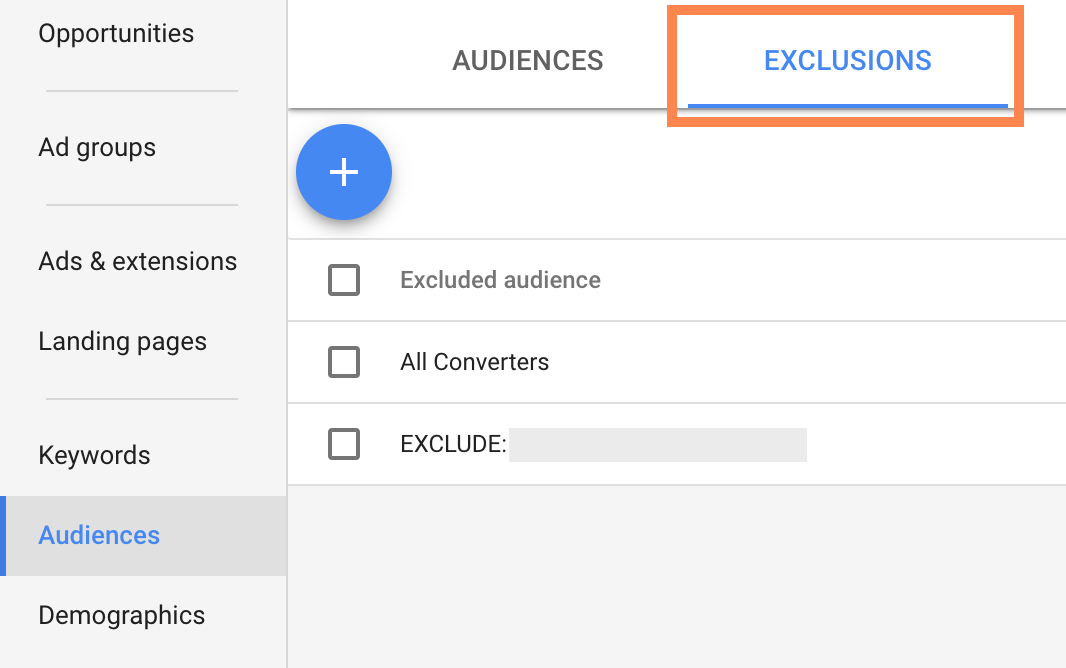Audience targeting has had a massive impact on the way PPC pros approach their campaigns.
They have tremendous versatility and allow advertisers to focus on the right folks as they’re bouncing around the world wide web.
Most often, audiences seem to be relegated to the retargeting, display, and social strategies, but that’s only part of the story. Audiences can be a huge benefit to search campaign strategies as well.
Whether they’re as the sole targeting for a campaign or simply as a bid modifier layer, here are five ways you can leverage audiences in your search campaigns.
1. Remarketing Lists for Search Ads (RLSA)
The simplest way to utilize audiences in search is to layer them into existing keyword strategy.
The goal is to target users already in remarketing lists as they continue to search for your keywords.
This is a great way to stay top-of-mind for someone doing research for any product or service where users normally shop around.
Advertisers can leverage their remarketing lists in a couple of ways:
Add the Audience as a Bid Modifier Layer to Existing Campaigns

Simply head into the audiences section of the interface, add targeting, and choose the audience you want to use.
Then, adjust the targeting setting to Observation. This means the audience will operate as an additional layer within the search audience, but not as the sole targeting.

This audience can utilize a bid modifier to be more or less competitive compared to searchers not in the audience in the same way bid modifiers are used for geography or dayparting adjustments.
Create a Separate Set of Campaigns for this Audience
To target these users separately, duplicate your existing search campaigns and choose the Targeting option. This means you’ll only be targeting those users in the RLSA list.
This strategy is best when there is a large amount of search volume coming through your RLSA lists.
Separate campaigns allow you to leverage all the bells and whistles of a typical search campaign but segmented specifically for these users.
2. RLSA with Dynamic Search Ads (RDSA)
Similar to RLSA, we can combine our retargeting lists with another campaign type, Dynamic Search Ads, to make for even more audience fun.
Dynamic Search Ads (DSA) are to extend the reach of search campaigns beyond the current keyword set.
They utilize the content on a website to find additional queries not currently being bid on in the account.
When combined with RLSA, DSA campaigns can help you stay in touch with users who are both in your lists and are searching for terms relevant to your site but not in your current keyword lists.
Here again, you can stay top of mind while someone is searching for a solution close to your wheelhouse.
These audiences will be set up in much the same way your RLSA lists will be, on the Audiences tab in the interface.
3. Audience Exclusions
Sometimes it isn’t about who you’re targeting, but who you’re excluding.
In some businesses, you only need a person to convert on your site once.
Think about a local insurance agent trying to gain new clients. If someone comes to their website, fills out a form with personal information, the agent gets that info and has everything they need to follow up.
There’s no reason to continue to pay for that person to click on your ad if they’re only going to try and give you the same information again, causing you to pay for it twice.
This is a pretty basic scenario, but it happens fairly often.
Don’t think of audiences in search campaigns as only targeting options, they can be exclusions as well.
As a general rule, I like to create audiences for each of the conversion actions I have within an account. This way, I can exclude converting users from my campaigns intended to drive that same conversion action.
If the insurance agent above were to set up a Call Only campaign to drive users to call them, this could be considered a different action.
It would make sense to include any users who have previously sent in their personal information in this campaign as you aren’t paying for the same touchpoint.

Audience exclusions can be added in much the same way as RLSA lists.
In the upper portion of the screen, simply change to the Exclusions section of the page and add the audiences you want to exclude.
4. Similar Audiences for Search
For the last two audience types, we’re going to step out of your remarketing lists and get into new user territory.
The first is Similar Audiences for Search, announced in May 2017.
Here’s how Google explained the benefits of Similar Audiences:
“Similar audiences helps you find people who share characteristics with your site visitors. By adding ‘Similar audiences’ to your campaign or ad group targeting, you can show your ads to people whose search behavior is similar to those of your site visitors. These people are more likely to be potential customers.”
Essentially, Google will review your remarketing lists and work to create a list of users who exhibit similar search behavior. They’ll then put them in a list and let you target them.
Crazy powerful.
These audiences can be leveraged in either an Observation or Targeting capacity, much the same as RLSA, but I would recommend keeping them as part of existing search campaigns and not segmenting into their own campaigns.
Since these users haven’t engaged with you before (which is why they’re not part of your remarketing lists), they’ll most likely respond to the same type of messaging you’re using for your search campaigns.
5. In-Market Audiences
The last audiences to leverage unfortunately aren’t quite available for full rollout but are something to keep in mind.
In-Market audiences have been around for a while, mostly for utilization on the Google Display Network. These audiences are described by Google as follows:
“Find customers who are researching and are actively considering buying a service or product like those you offer.”
Essentially, Google will leverage it’s already large list of In-Market Audiences based on user behavior, and allow you to leverage those same insights in search campaigns.
Think of it as Similar Audiences, but instead of being based on your retargeting lists, they’re based on high-level consumer trends across the internet.
Currently, Bing Ads is running a U.S.-only pilot program to test out their In-Market Audience functionality, and you can ask to be included.
In a Bing Ads blog post from June 2017, they mention only 14 In-Market Audiences, but as of October 2017, that number had jumped to 128.
Quite a big improvement. If you would like to be included in this pilot, simply get in touch with your Bing rep and ask to be added.
Conclusion
There are a number of ways to leverage audiences in search campaigns that don’t take too much effort. Since most of them rely on remarketing lists, don’t neglect that portion of your account.
Make sure your lists are up to date and meaningful so you can better leverage them as targets, exclusions, and audience models in your account. Happy targeting!
More PPC Resources:
- 5 Ideas to Take Your PPC Audience Strategy to the Next Level
- PPC Basics and Beyond
- Using Google Demographic Data to Optimize Your PPC Account
Image Credits
Featured image: skeeze/Pixabay.com
Screenshots taken by Michelle Morgan, January 2018




